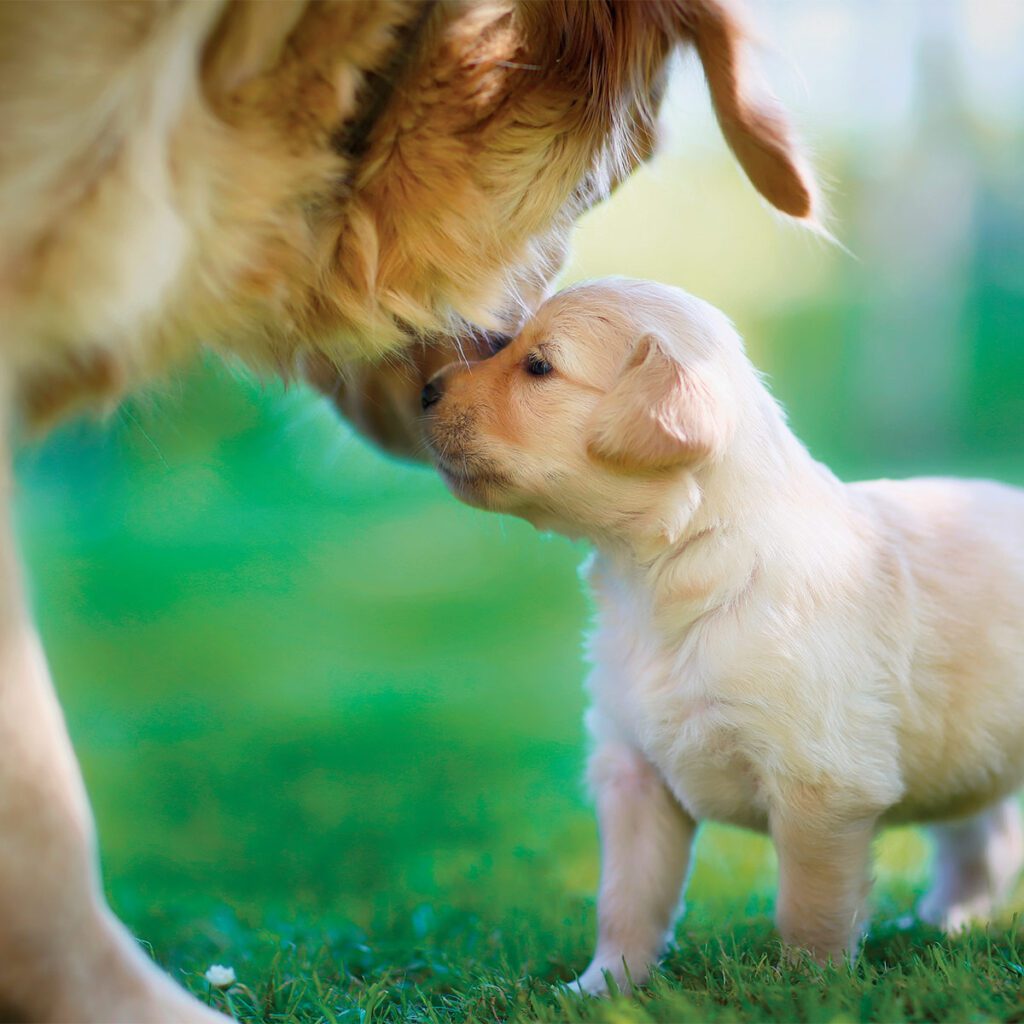How to Handle Pet Pregnancy
So you’re going to have a litter…
Ideally, your pet would have been spayed early in her life, as it improves your pet’s long-term health and helps counteract pet overpopulation. However, the reality is, many pet owners still opt not to go this route for many different reasons. Whatever the reason, if you have an un-fixed female at home, it is possible that one day you’ll have to learn how to care for your pet while she’s pregnant. While the topic is more complex than can be explained in one short article, here two local experts offer advice for basic prenatal, labor and delivery, and post-delivery care as they go over some of the most important things to expect when your pup is expecting.
Confirming Pregnancy
A dog’s gestation period (amount of time they’re pregnant) only lasts for about two months – approximately 63 days. Observing changes in your dog and confirming pregnancy is key to providing appropriate care.
As Dr. Andy Killian of Ashland Terrace Animal Hospital explains, “You may notice the abdomen becoming larger, or later in the pregnancy, some behavioral changes such as nesting, restlessness, nervousness, or even the beginning of milk production.”

'Whelping' is the term used for birthing puppies."
All are indicators of pregnancy, and a sign that it’s time to take her to the vet.
“An experienced veterinarian can palpate fetuses and uterine enlargement anywhere from 20 to 30 days of gestation to confirm pregnancy,” says Dr. Killian. This involves your vet feeling the dog’s abdomen to locate tiny “balls” or the fluid-filled amniotic sacs of the puppies, which should neatly line both sides of the uterus. They can be the size of a golf ball or small grape, depending on the breed of your dog. An abdominal palpation should never be performed without the supervision of a veterinarian because it can hurt the pups.
Once pregnancy has been confirmed, you can ask your vet for prenatal care advice and anything to watch to ensure your pet has a healthy pregnancy.
Prenatal Care
Once pregnancy is confirmed, it’s important to begin practicing prenatal care for the mommy-to-be. An ultrasound appointment can be scheduled for approximately 23 to 38 days, and can confirm fetal heartbeats. Dr. Killian explains that next, a radiograph could be helpful, “Radiographs can detect fetuses as early as 45 days, but are more commonly scheduled around day 54 to 56. It’s helpful to know how many puppies to expect.” Knowing this allows you to prepare to find them good homes (if you won’t be keeping them), to know how many pups to watch for during delivery, and to better monitor all pups’ and the expectant mother’s vitals.
As Dr. Killian also explains, your vet may recommend bloodwork for your expectant dog to ensure protein, glucose, and calcium levels are adequate to provide appropriate nutrients to the fetuses. Assuming her levels are good, no other supplements are needed. For her nutrition, it is fine to keep her diet the same until the third trimester (around week five or six), at which point, most vets recommend switching her to a high-quality puppy food. She should stay on this diet until the puppies are weaned. This helps ensure that the puppies are receiving the proper nutrition for their young dietary needs through development and nursing.
As far as physical activity, it’s important to continue daily walks and the mother’s other normal daily activities that are low impact. But avoid over-exerting her. Starting around week five or six through at least three weeks post-delivery, you should keep the mother away from other dogs. Not only does this protect her and the pups from infections, it also avoids any aggressive behavior, as the mother will be feeling more territorial and protective of her babies.


It’s fine to monitor her progress, but try not to hover or be too involved, as this can cause more harm than good.”
Dr. Marisa Shulman
Delivery Prep
Dogs are naturally inclined to search for a safe place to deliver their pups. Because of this innate desire, you will want to provide a clean and safe space for your dog to deliver. “Create a quiet area for a whelping box so that mom can nest and prepare without stress,” says Dr. Marisa Shulman of Riverview Animal Hospital. This can be as simple as a gated off laundry room, pantry, or corner of your garage (that you don’t mind surrendering for about six weeks), or you can provide an actual whelping box. These can be built or bought and should provide easy walk-in/out access for your dog and relatively high walls. Whether you use a whelping box or segregated space in your home, it should be clean, lined with paper, towels or blankets, soft wood chips, or any combination of those. About three weeks prior to delivery, you can begin acclimating the mother-to-be to this new space, so she will feel encouraged to nest there when labor begins.
Labor & Delivery
There are three stages of labor: cervix relaxation and uterine contraction, followed by delivery of the puppies, and then delivery of the fetal membranes. According to Dr. Shulman, “Each puppy is typically delivered every 30 to 60 minutes until finished. The labor process is usually completed within about six hours. However, some larger litters can extend up to 24 hours without complications.” This is the stage where it is useful to have confirmed the amount of fetuses expected, so that you can monitor the mother’s progress. And ideally, the mother should complete delivery without any help or interference. And Dr. Shulman adds, “It’s fine to monitor her progress, but try not to hover or be too involved, as this can cause more harm than good.”
Of course, there are times when emergency intervention may be required. While keeping check on your pregnant pup, Dr. Shulman says to watch for any of the following, and contact your vet if you observe:
- Strong contractions 30 to 60 minutes with no puppy delivered.
- More than four hours pass between fetal deliveries, and you know there are puppies left to be delivered.
- Labor does not begin within 24 hours of the mother’s temperature dropping below 100 degrees F.
- There is obvious pain.
- Gestation lasts longer than 70 days without labor.
If any of these are observed, you’ll likely need to take your pet to your veterinarian for intervention, which could include emergency surgery.
Post-Delivery Care
Immediately after delivery, try to observe how the mother treats the newborn pups. Ideally she will be removing placental membranes, cleaning each puppy, and allowing them to nurse. If she is ignoring any or all of the newborns or being aggressive toward them, the puppies may need to be taken away from the mother and cared for by humans. First-time mothers and dogs with aggressive tendencies are more prone to this behavior, but it can happen with any litter.
Don’t be alarmed if the new mom develops a fever for the first few days after delivery. That’s normal. However, other signs of illness are not and should be inquired about with your vet.
As far as the puppies, the new mom should already know how to care for them, even if she’s a first-time mother. Try not to handle the newborns too much, especially within the first few days. Keep a check on them to make sure their space is clean, dry, and contained, which allows the mother to take occasional breaks without the pups wandering.


Dr. Andy Killian
Veterinarian, Ashland Terrace Animal Hospital


Dr. Marisa Shulman
Veterinarian, Riverview Animal Hospital

